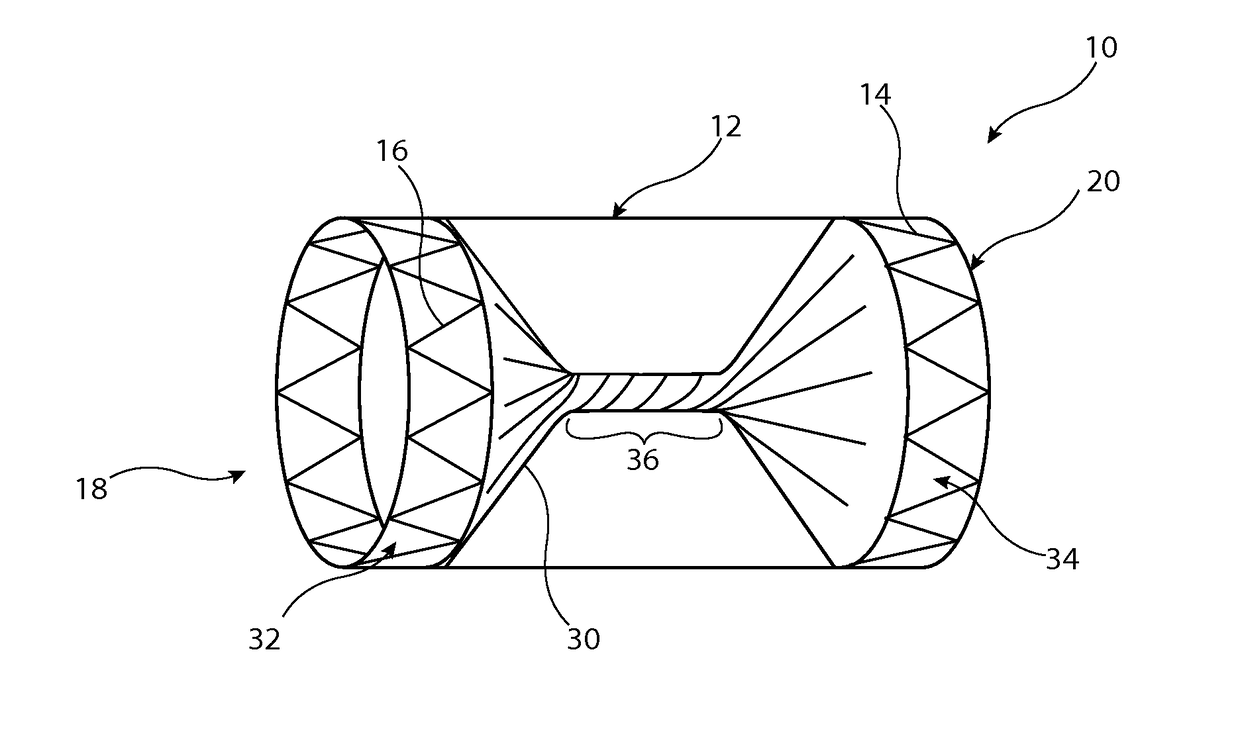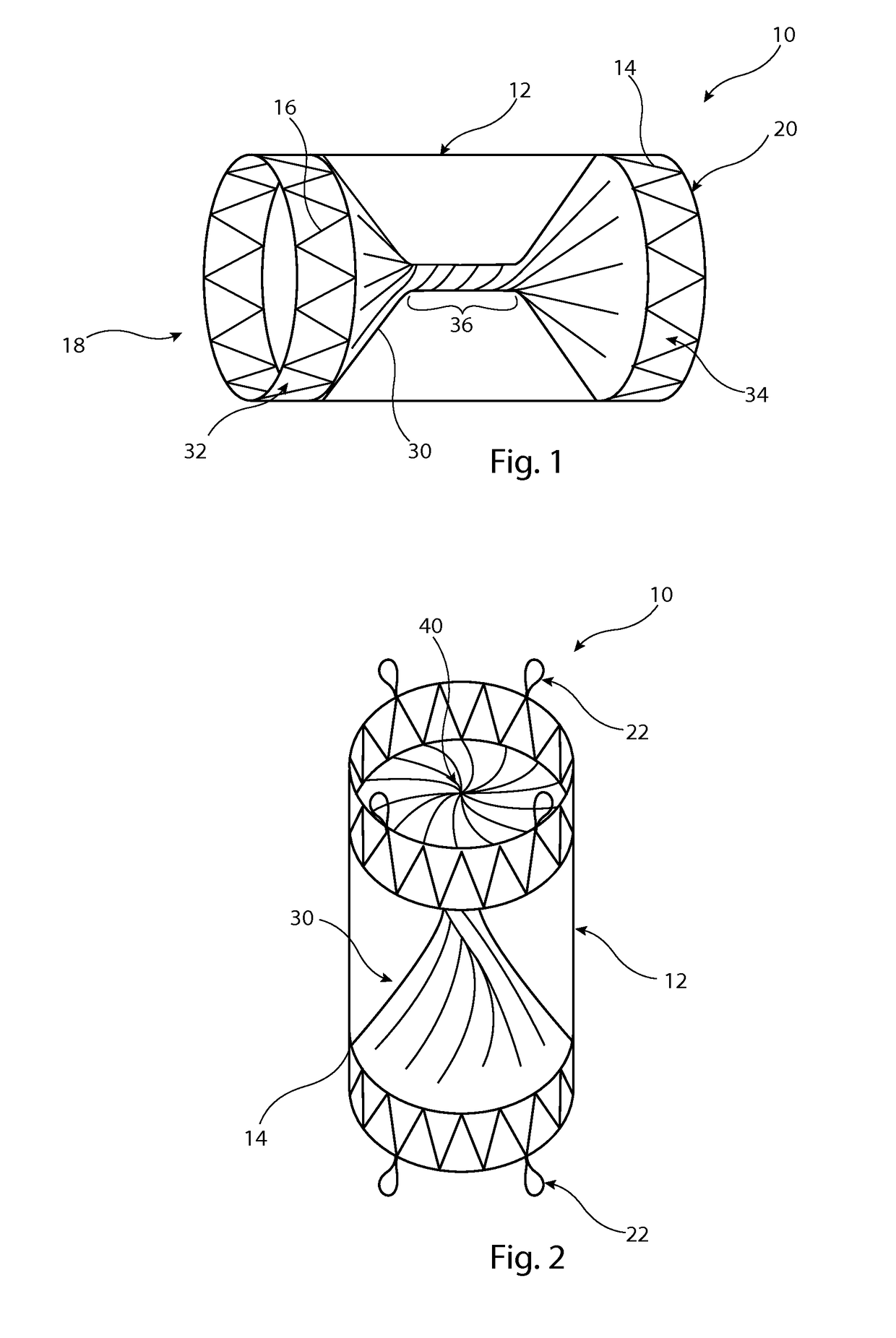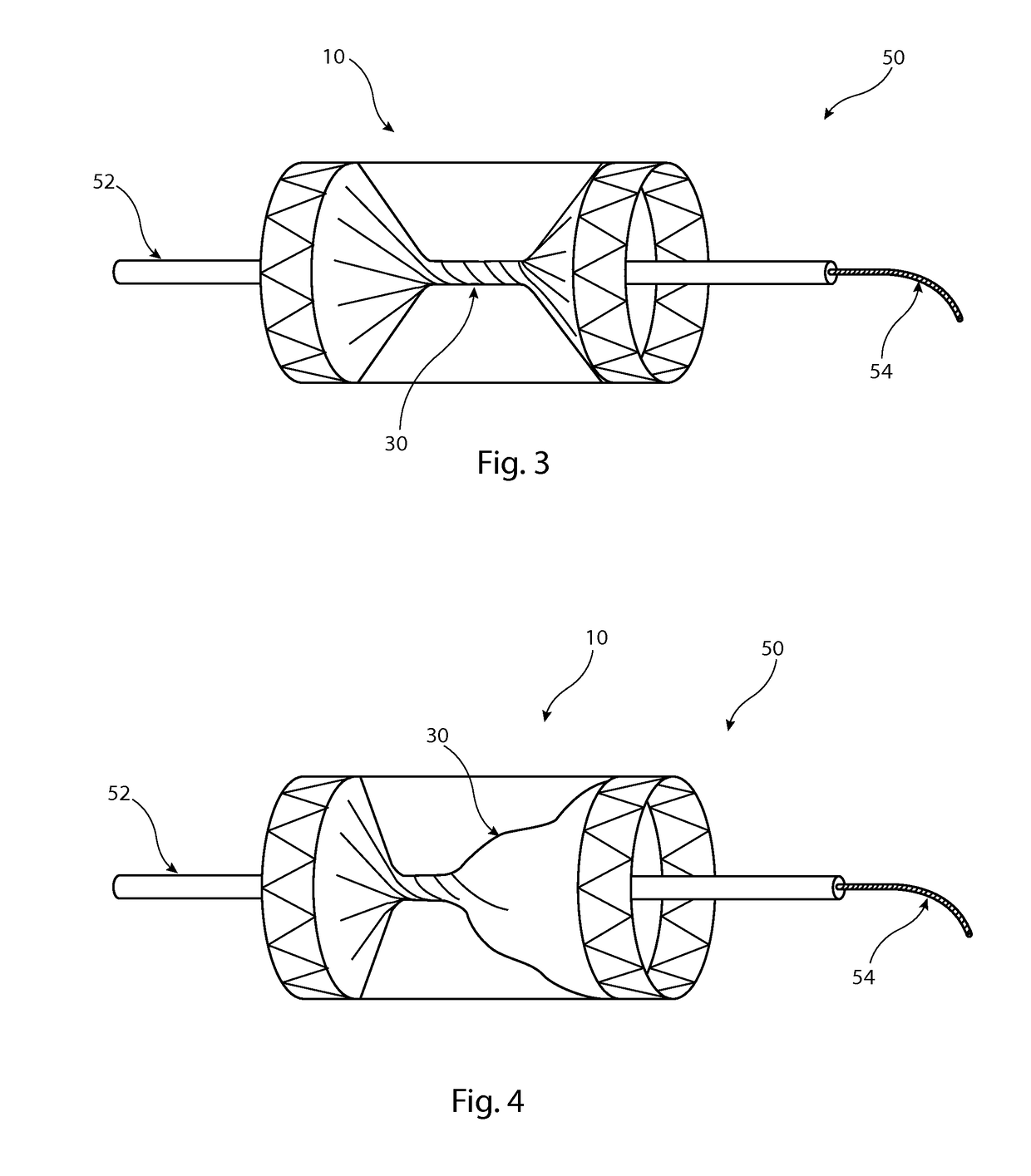Implantable medical device with twisted element
a medical device and element technology, applied in the field of implantable medical devices, can solve the problems of loss of instantaneous occlusion and/or risk of leakage through the opening, reduced compressibility, and relatively difficult deployment of devices, and achieve the effect of enhancing the closing
- Summary
- Abstract
- Description
- Claims
- Application Information
AI Technical Summary
Benefits of technology
Problems solved by technology
Method used
Image
Examples
Embodiment Construction
[0028]The preferred embodiment described below is configured as a vascular occluder. It is to be understood, though, that the medical device could be configured to perform other functions, such as a vascular filter.
[0029]Referring first to FIG. 1, this shows an implantable medical device 10 in the form, in this embodiment, of a vascular occluder. The device 10 includes a tubular support element 12 which in this embodiment is a stent formed of a plurality of zigzag stent rings 14 coupled together by a series of tie bars 16 connected in this example to apices or troughs of adjacent stent rings 14. The support element 12 is substantially cylindrical and round in transverse cross-section, although in other embodiments could have a different shape, for instance a tapering form or with a central waist. It is to be appreciated that stent rings 14 could extend for the whole length of the tubular support element 12, that is also with stent rings located between the end stents which are shown...
PUM
 Login to View More
Login to View More Abstract
Description
Claims
Application Information
 Login to View More
Login to View More - R&D
- Intellectual Property
- Life Sciences
- Materials
- Tech Scout
- Unparalleled Data Quality
- Higher Quality Content
- 60% Fewer Hallucinations
Browse by: Latest US Patents, China's latest patents, Technical Efficacy Thesaurus, Application Domain, Technology Topic, Popular Technical Reports.
© 2025 PatSnap. All rights reserved.Legal|Privacy policy|Modern Slavery Act Transparency Statement|Sitemap|About US| Contact US: help@patsnap.com



